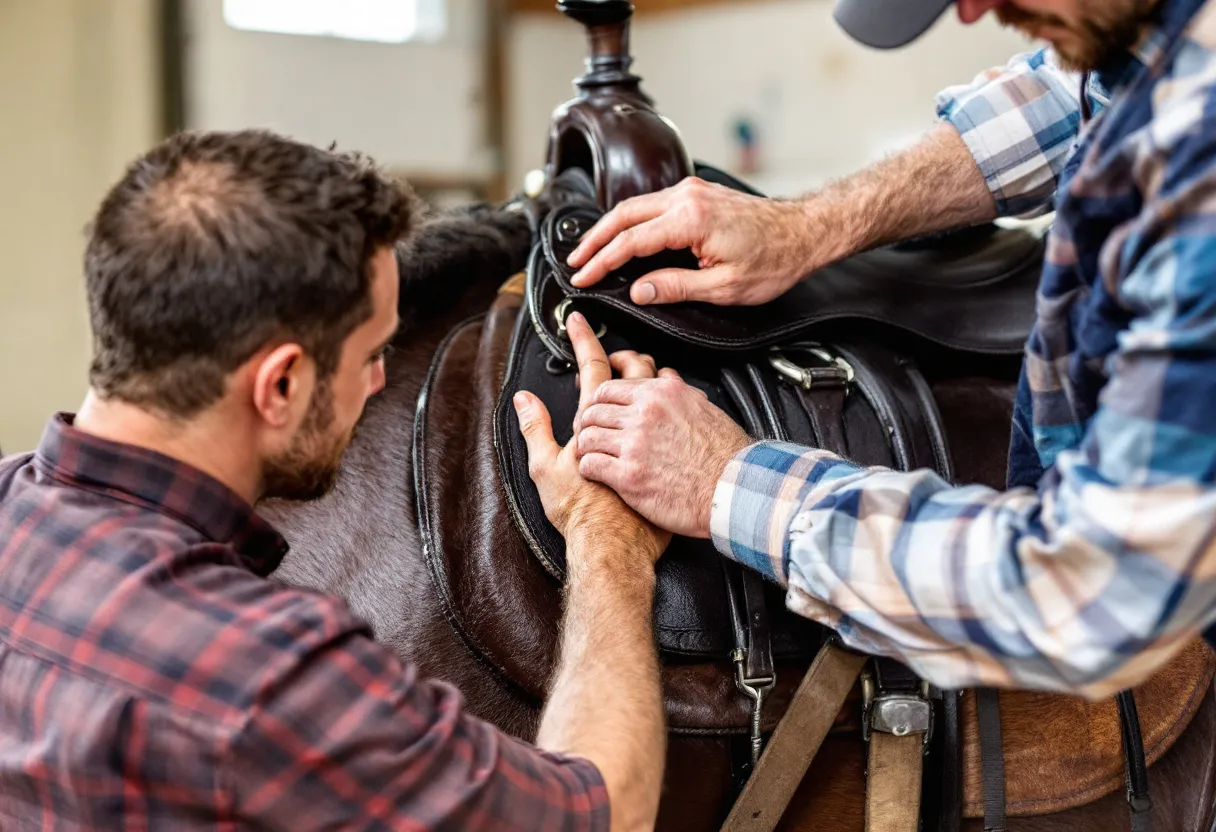As horse owners, we all strive to provide the best possible care for our equine partners. A critical aspect of this care is ensuring a proper saddle fit. An ill-fitting saddle can lead to discomfort, pain, and even long-term health issues for your horse. Trust me, I’ve seen it all, from minor rubs to significant lameness issues stemming from poor saddle fit. So, let’s dive into some common problems and, more importantly, how to fix them!
Recognizing the Signs of a Poorly Fitting Saddle
Your horse is a master communicator, even if he doesn’t speak our language. He’ll tell you if his saddle isn’t working for him, but you need to know what to look for. Keep an eye out for these telltale signs:
- Soreness or sensitivity: Check your horse’s back regularly for any tender spots, especially along the spine and withers. Gently palpate the area to feel for any heat, swelling, or pain.
- Changes in behavior: Is your horse suddenly girthy, refusing jumps, or displaying unusual resistance? These could be signs that his saddle is causing him discomfort. Believe me, a happy horse is a willing horse, and a change in attitude is a red flag.
- White hairs or bald spots: Patches of white hair or bald spots under the saddle area indicate rubbing and pressure, which can lead to chronic pain and skin damage.
- Uneven sweat patterns: After a ride, a consistent sweat pattern is ideal. Dry spots under the saddle can suggest uneven pressure distribution.
Common Saddle Fit Issues and Their Solutions
Now that you know what to look for, let’s discuss some common saddle fit problems and how to address them. Remember, a professional saddle fitter is your best resource for a truly customized solution. But, here’s some insight to get you started:
Bridging
Bridging occurs when the saddle makes contact at the front and rear but not in the middle, creating a “bridge” over the horse’s back. This concentrates pressure at the points of contact, leading to discomfort and potential injury. Imagine wearing shoes that only touch your heel and toes – not comfortable, right?
Solution: A saddle with a flatter tree, or adjustments to the flocking can help create more even contact along the horse’s back. A correctly fitted pad can also help in some cases, but it’s essential to address the underlying saddle fit issue.
Pinching at the Withers
This happens when the saddle is too narrow for the horse’s withers, causing it to pinch and restrict movement. Signs of pinching include soreness around the withers, reluctance to move forward, and white hairs in the area. I’ve seen horses develop serious aversion to being saddled due to this problem!
Solution: A saddle with a wider tree is necessary to provide adequate clearance for the withers. A professional saddle fitter can assess the horse’s conformation and recommend the appropriate tree size.
Saddle Slipping
A saddle that consistently slips to the side, either during mounting or riding, indicates an imbalance. This can be due to the horse’s conformation, the rider’s position, or the saddle itself. A slipping saddle not only interferes with the rider’s balance but also puts undue stress on the horse’s back.
Solution: First, evaluate the horse’s conformation for any asymmetry. Then, check your own riding position for any tendency to lean or sit unevenly. A saddle with a more appropriate tree shape or adjustments to the flocking can help stabilize the saddle. In some cases, a non-slip pad may also be beneficial. Let’s face it, no one wants to feel like they’re constantly fighting to stay in the saddle!
Too Wide
A too-wide saddle will sit too low, placing pressure on the withers. One sign of this is edema, or fluid accumulation under the skin, especially on the withers. If you dont correct this problem soon, these pressure points can become very painful. They may even progress to open sores. Even if they dont break open, the affected areas can experience pigment loss, leading to telltale patches of white hair.
Solution: Check saddle fit. Ideally, you can find a saddle fitter in your area to help. If not, go to youtube.com, and find informative videos with a search for Western saddle fitting: proper way to fit a horse. Once you know that your tree size and gullet width are correct, avoid using pads that are too thick. A too-thick pad can cause pressure even with a properly fitted saddle, because you must cinch the saddle extra tight to keep the pad in place. If the swelling is painful and persistent, avoid riding until its resolved, and ask your vet whether it might be advisable to treat the area with a topical anti-inflammatory medication (such as Surpass) to quiet it down.
The Importance of Professional Saddle Fitting
While these tips can help you identify and address some common saddle fit problems, a professional saddle fitter brings a wealth of knowledge and experience to the table. They can assess your horse’s conformation, evaluate the saddle’s fit in motion, and make precise adjustments to ensure optimal comfort and performance. Think of it as getting a tailored suit versus buying something off the rack – the difference in fit and feel is significant!
Investing in a well-fitted saddle is an investment in your horse’s well-being and your own riding enjoyment. Don’t hesitate to seek the expertise of a qualified saddle fitter to ensure a happy and healthy partnership with your horse.

So, there you have it – a glimpse into the world of saddle fit problems and their solutions. Remember, your horse’s comfort is paramount. By paying attention to the signs and seeking professional help when needed, you can ensure a long and happy riding partnership!
